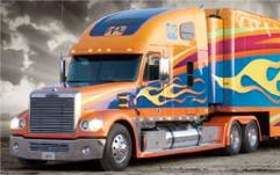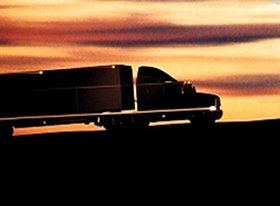Footwear
Topic 8625 | Page 1
Personally, a comfy pair of sneakers is the best but I do keep a pair of steel toes on hand in case there's a shipper or receiver that requires them as PPE.
Shipper:
The customer who is shipping the freight. This is where the driver will pick up a load and then deliver it to the receiver or consignee.

A second to what Robert said. A good pair of comfy sneakers is a good choice. I also keep a pair of boots in the side box.

For training purposes then a good pair of sneakers should work? Or should I pack my desert tundra boots as well?

For the best of both worlds, they make work sneakers that are also steel toed, nonslip, etc. I wear a pair of Cat work shoes that I love. They look like a pair of regular black sneakers and are super comfy. Never had any problems driving 10+ hours. I don't know about anyone else but even well-fitting boots start to hurt my ankles on a long drive.

I tried wearing boots when i was in training, had problems with the clutch, so my trainer suggested a light pair of sneakers, which allowed me to "feel" the clutch, that problem disappeared the first day, so I also recommend light footwear, may want to carry boots to, ask your recruiter about that, and two pairs of light footwear, incase one pair gets wet. Good luck.
SAP:
Substance Abuse Professional
The Substance Abuse Professional (SAP) is a person who evaluates employees who have violated a DOT drug and alcohol program regulation and makes recommendations concerning education, treatment, follow-up testing, and aftercare.
The one most important thing to look for is something with a slip resistant/oil resistant sole and decent traction. You're going to be climbing in and out of the cab in all kinds of weather, on all kinds of surfaces, with god only knows what on them, and you want to make sure you have the best footing possible.
I have four pairs of steel toed boots and one pair of sneakers for those rare days when all I have to do is drive, but I think I'm in the minority even among flatbedders, since I see a lot of them wearing sneakers. I've never had a problem shifting with boots on, and prefer the extra ankle support.
Ditto to the comment on slip resistant - absolutely necessary, even in warm weather. Diesel fuel is slick as snot.
HOS:
Hours Of Service
HOS refers to the logbook hours of service regulations.Shoes for Crews has good variety of tennis shoes, I've bought the black plain janes many times. And they are pretty dang slip resistant in most wet spots lol trans fluid, coolant, oil etc

I wear boots while driving/working and have a pair of sandals and sneakers for the end of the day. My boots are comfortable to me but I also made sure I bought a high quality pair. They are waterproof hiking boots I got from Red Wing shoes as I don't go to any places that require steel toed shoes. When I was with my trainer I had my boots and a pair of sneakers due to lack of space. I find that my sneakers tend to catch on the steps when climbing in and out and I have almost fallen a couple of times and that is another reason I like my boots. You will find what works best for you in time. Good luck!
New Reply:
New! Check out our help videos for a better understanding of our forum features

















Preview:








 TT On Facebook
TT On Facebook
Well I'm shipping out to Springfield on June 22nd. Gonna tour some national parks around California before I head out though. Redwoods, Lassen and hopefully Yosemite.
In the meantime though I was curious what kind of footwear should I take to Missouri? With the major problem of this (unknown to me) double clutch what's the best kind of shoes?
I haven't wore boots since Iraq and usually go for a pair of low top vans. But Whay kinda shoes do you all wear out there?
I know the shower shoes are necessary unless you want the foot rot.
Do you go for boots, sandals, or just a pair of sneakers?
Against as always thank you for making the high road trucking program. I'm gonna sing praises about it my whole time in Missouri. I don't know why the recruiters don't talk about it?
Double Clutch:
To engage and then disengage the clutch twice for every gear change.
When double clutching you will push in the clutch, take the gearshift out of gear, release the clutch, press the clutch in again, shift the gearshift into the next gear, then release the clutch.
This is done on standard transmissions which do not have synchronizers in them, like those found in almost all Class A trucks.